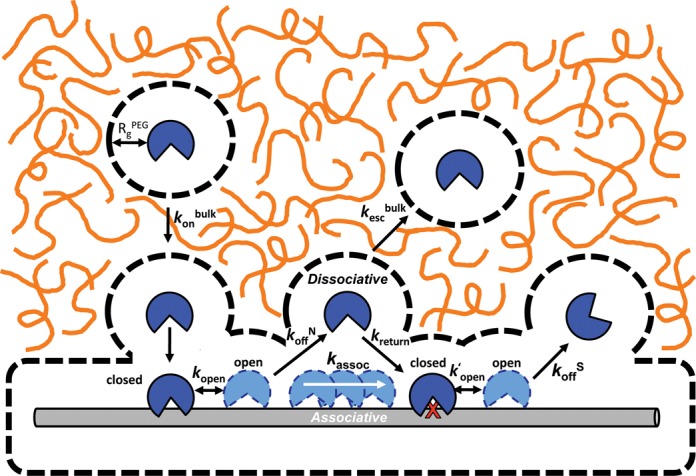Figure 6.

General schematic of how the introduction of molecular crowders (orange lines) can influence individual steps in the DNA glycosylase damage search pathway. These steps including the rate of diffusion to the DNA chain (kon), the lifetime of nonspecific (1/koffN) and specific (1/koffS) DNA complexes, the probability of associative and dissociative transfers between damage sites, and changes in the rate of product release (rate-limiting for kcat). Dashed lines represent the sizes of the depletion layers surrounding the protein and DNA where the PEG 8K polymer, but not solvent, is excluded. For large DNA molecules, association is limited by translation of the protein through the crowded solution (konbulk) until their depletion layers overlap and association proceeds within a low viscosity environment. Also depicted are highly dynamic closed-to-open conformational changes in hUNG and hOGG1 that accompany nonspecific DNA binding (42,50); only the open state is viewed competent for translocation (50). Release of each enzyme from the product requires an even larger closed-to-open transition that has been shown to be at least partly rate-limiting for turnover of hUNG (k′open) (46). Image is drawn to scale using a DNA duplex of 2 nm as a scale reference. The depletion layer size in the dilute regime for PEG 8K is shown (equivalent to RgPEG, see Supplemental Information).
